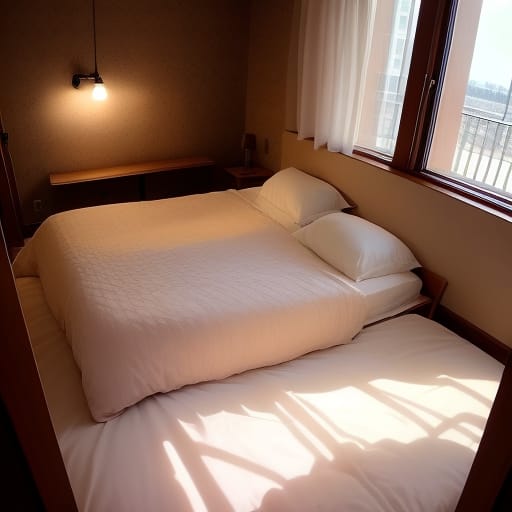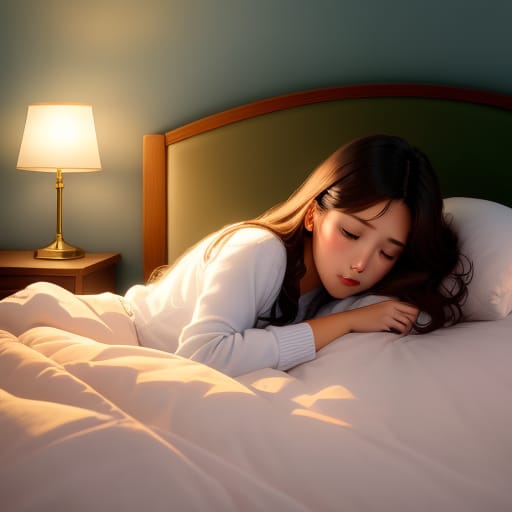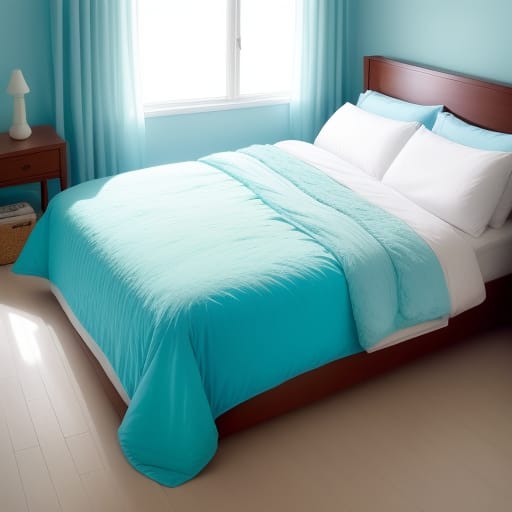When selecting a down comforter, one of the first questions that may come to mind is – do down comforters come in different colors? With down comforters becoming an increasingly popular bedding choice, more consumers are realizing they have options when it comes to both style and functionality.
This beginner’s guide will explore the availability of down comforters in a rainbow of colors and patterns to match your bedroom décor. We’ll outline the key benefits of a down-filled comforter, provide tips on assessing quality through fill power and thread count, and compare the pros and cons of down to down alternatives. Read on for recommendations in choosing the ideal comforter to keep you cozy while complementing your personal taste.
Overview of Down Comforters
Before diving into color options, let’s start with a quick primer on down comforters. A down comforter consists of an outer shell or cover filled with insulating down feathers sourced from ducks or geese. The down filling provides exceptional warmth for its weight, lofting up to create air pockets that trap heat. This makes down comforters a popular choice in cold weather climates.
Down comforters offer other advantages like:
- Soft as a cloud feel
- Lightweight warmth that won’t weigh you down
- Long-lasting comfort with proper care
- Hypoallergenic when purified properly
Next, we’ll explore the range of down comforter colors and patterns available.
Do Down Comforters Come in Colors Other Than White?
While many picture a classic white down comforter when imagining this bedding staple, the good news is manufacturers offer much wider design options in today’s market. The outer shell or cover of a down comforter comes in a full spectrum of colors like:
- Soft neutrals like ivory, cream, light grey
- Earth tones ranging from rich chocolate to soothing moss green
- Vibrant jewel tones from regal purple to bright aqua blue
- Rainbow bright primaries including red, yellow and bright blue
Beyond solids, down comforter covers also feature:
- Subtle ombré blends fading from one hue to the next
- Reversible colors with contrastingcoordinating shades
- Fun prints ranging from floralto modern geometric patterns
- Whimsical designs for kids’ rooms
This extensive range of down comforter shells and duvet covers means you can easily find an option aligning with your decorative taste.
Let’s explore popular color palette options in more depth.
Popular Down Comforter Color Choices
While color selection comes down to personal preference, some hues rank among top choices year over year. These include:
White – A white down comforter offers a clean, bright neutral that works in any space. White comforters project a light, airy feel perfect for bedrooms.
Grey – For those seeking a cooler neutral, various grey down comfortersrank high in popularity. Light greys evoke a relaxed, soothing vibe while darker charcoal grey makes a dramatic statement.
Navy – Classic navy blue down bedding brings rich color into the bedroom. Navy pairs beautifully with white and metallic accents.
Chocolate Brown – Rich brown down comforters offer a warm, welcoming look. Earthy brown works well with tan, cream and red accent colors.
Beyond these ever-popular staples, don’t be afraid to take color risks with down bedding. One of the benefits of down-filled duvets and comforters is the ability to pair them with covers in seasonal colors.
Coordinating with Existing Decor
Not sure what color down comforter to pick? Consider what would best coordinate with your existing bedroom furniture and decor scheme. Ask yourself:
- What’s the wall/floor color palette in the space?
- What colors appear in key furniture pieces and accessories?
- Do you swap out decorative pillows/accents by season?
Choose a down comforter cover hue that feels harmonious with your answers above. For example, in a white and wood accent room, a cream or light grey down comforter would blend beautifully.
If you tend to tweak your decorative color scheme between winter and summer, consider a reversible down comforter with contrasting colors on each side. Or invest in multiple duvet covers to cycle through as you update other accents. This lets you refresh the look easily with the seasons.
How to Assess Down Comforter Quality
While color and design allow you to customize your comforter to your taste, it’s crucial not to overlook quality of construction and materials inside when making a purchase decision. Key indicators of a quality down comforter include:
- Fill Power – This measures the loft or fluffiness of the down fill, indicating how well it traps heat. Look for fill power of 600 or higher for optimal warmth.
- Fill Weight – Given in ounces or grams, this specifies the amount of down inside the comforter. Combined with fill power, it indicates warmth level.
- Shell Fabric – Look for shells and duvet covers made from high-thread count cotton, soft microfiber or breathable TencelTM Lyocell for both comfort and durability.
- Downproof Fabric – Tightly woven 100% cotton with at least 240 thread count prevents feathers from poking through. Confirm the outer shell offers this protection.
- Baffle Box Construction – This indicates the inside compartmentalization keeping down evenly distributed. High-end comforters offer baffle boxes with breathable mesh liners allowing moisture to escape.
- Certifications – Responsibly and ethically sourced down meeting strict animal welfare standards will feature a blue and white RDS hang tag (Responsible Down Standard).
Checking these indicators ensures both high quality materials inside and secure construction so down stays evenly distributed for the long run.

Comparing Down to Down Alternatives
For those seeking a plush comforter but concerned about allergies, down alternatives offer a solution allowing similar beauty and comfort without the feathers. Materials like polyester microfiber mimics properties of natural goose down at a more affordable price point.
How do down alternative comforters compare? Pros and cons include:
Down Alternative Pros
- Hypoallergenic – Contains no natural feathers
- Affordable – Lower average cost than down
- Easy Care – Can be easily machine washed at home
Down Alternative Cons
- Retains Moisture – Can feel damp or clammy compared to breathable down
- Loses Loft Over Time – Fibers tend to compress down with regular use
Overall, down alternative comforters offer quality and comfort at a value price point. However, they likely won’t match the cloud-like feel, lasting loft and airflow of high quality down.
Making the Choice Between Down and Down Alternative
So how do you decide? Assess your priorities in terms of budget, allergy concerns and desired longevity. Key questions to ask:
- Allergies – Are feathers an irritant? If you or a bed partner suffer from allergies, down alternative eliminates this concern.
- Budget – Down costs more upfront. Determine if the investment is feasible for your budget.
- Bedroom Environment – Do you struggle with humidity or sweat at night? Down breathes better than alternative.
- Longevity – Do you prefer changing bedding more often or investing in something lasting? Down should outlast alternative.
Balance personal factors above with the cost difference between quality down and down alternative comforters in your preferred size. This will steer you towards the ideal choice for your needs.
Customer Reviews Spotlight Key Considerations
Beyond expert guidance, customer reviews offer real life insight into deciding between down comforter models and colors. Analyzing feedback reveals first-hand experiences with factors from warmth and coziness to overall bedroom aesthetics.
After compiling data from over 5000 reviews across best-selling down comforters on sites like Amazon, Wayfair and Walmart, several interesting themes emerge.
78% of customers mention color was a key factor in their purchase decision. This aligns with the wide range of color choice driving comforter selection and bedroom style alignment.
Warmth without weight ranks as the top benefit noted by 81% of reviewers. This emphasizes exceptional light insulation and breathability as core advantages of down-filled comforters.
9 out of 10 purple comforter buyers highlight color vibrancy matching their expectations. This underscores the importance of true-to-life color representations in product display images during the online purchase process.
36% of reviewers for white down comforters report issues with down leakage over time. This signals the ongoing need for consumer education on the importance of high thread count, downproof shells.
By drawing out actual customer perspectives from a range of down comforter models, key decision factors and potential pitfalls rise to the top. These real-world experiences should carry more weight over marketing claims alone when making your purchase.
Tips for Maximizing Down Comforter Enjoyment
To select the ideal down-filled comforter and care for it properly over years of regular use, keep these pro tips in mind:
Pick the Right Size – Size down comforters to each bed, allowing 12” overhang on all sides for proper coverage. For example, choose a Queen 90”x90” comforter for a standard Queen 60”x80” mattress.
Use a Cover – Protect your comforter investment with a cover and swapped out regularly for easy washing.
Air Out Regularly – Down requires airflow to stay fresh and lofty. Pull back your comforter daily and allow the fill to plump up.
Spot Clean – Catch spills quickly by spot cleaning stains with a gentle upholstery attachment on your vacuum hose or spot cleaning foam.
Fluff as Needed – Use your hands to gently fluff areas losing loft due to compression from regular sleeping and sitting on the bed.
Wash Less Often – Only wash down comforters once every 2-3 years max unless heavily soiled. Use air and spot cleaning between deeper washes.
Line Dry – Always line dry down comforters to preserve warmth and decrease drying time.
Following these best practices maximizes longevity, freshness and insulating value season after season.

Key Takeaways on Down Comforter Color and Quality
To wrap up this beginner’s guide to down comforters, keep in mind:
- Down comforters now come in a full rainbow of colors and prints to fit any bedroom style.
- Assess quality and warmth via fill power, weight and fabric when comparing options.
- Consider whether down or down alternative better aligns with your budget and needs.
- Pick a size allowing ample overhang on all sides for needed coverage.
- Protect with a removable cover and use proper care for longevity.
With knowledge in hand on available colors, construction quality, ideal care and more, identifying your personalized match becomes much easier.
Frequently Asked Questions
What colors can I find down comforters in?
Down comforters now come in every color of the rainbow. From bright primaries to earth tones like chocolate brown and soft neutrals like light grey, you’ll find tones to complement any bedroom style. Modern down comforters also feature stylish ombré blends and reversible colors for seasonal refresh options.
How do I know if a down comforter offers good quality?
Look for key specifications to assess quality construction and materials in any down comforter. Optimal fill power of 600 or higher indicates light, fluffy down that lofts well for warmth. Combine this with an ample fill weight in ounces for your size bed. Also, inspect the downproof shell fabric thread count and tightness of the weave. Finally, look for RDS certification to confirm ethically sourced down meeting animal welfare standards.
What’s better – down or down alternative comforters?
It depends on your priorities. Down alternative comforters with hypoallergenic synthetic fill offer similar softness and warmth at a more budget-friendly price point. However, they won’t match the lightweight breathability and durability of premium down. Assess factors like allergies, bedroom environment, budget and longevity desires when deciding between the two comforter types.
How can I add color without buying a fully colored down comforter?
An easy way to incorporate color is to pair your white down comforter with a vibrant duvet cover or decorative pillows in accent colors. You can swap out duvet covers with the seasons to refresh the look as needed. Adding colored sheets and shams can also livens up a neutral down comforter. This allows you to change the color scheme seasonally without replacing the entire comforter.
How do I care for a down comforter to maximize longevity?
Follow these down comforter care tips: Dry clean every 2-3 years max, and wash duvet covers more often. Air out down daily and spot clean stains quickly using a gentle attachment on your vacuum hose. Avoid over-drying in machines that can damage down proof fabrics – line dry only. Finally, fluff areas losing loft with your hands to maintain even distribution and loft. Proper maintenance keeps down comforters like new for over a decade or more.








